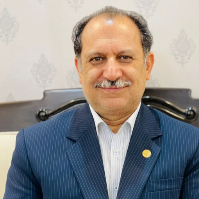Comparing Spiritual Health, Self-Efficacy, and Life Expectancy among Physically-Active, Mentally-Active, and Inactive Elderly
According to the United Nations Office, by 2030, older persons are expected to outnumber children aged <10years (1.41 billion vs.1.35 billion); by 2050, predictions indicate that there will be more persons aged ≥60 years than adolescents and youth at ages 10–24 years (2.1billion vs. 2.0 billion). Furthermore, estimates indicate that in 2050, an elderly would be in every 4–member family in Iran. Elderhood is a sensitive period, and the older people have acquired daily increasing attention that should not be ignored. In this case, every decision–making and scheduling concerning this issue requires detailed, subjective, and scientific–based recognition. Thus, it is essential to evaluate and compare the effect of the elderly’s participation in social, sports, and recreational groups. Thus, the present study aimed to compare spiritual health, self–efficacy, and hope in three groups of elderly (physically–active, mentally–active, and inactive (in Kermanshah City, Iran.
This was a descriptive–analytical study. The statistical population consisted of older adults present at the neighborhood center, elderly community, parks and public places, markets, mosques, and recreational areas in Kermanshah City, Iran. By the convenience sampling method, 346 participants aged >60 years were selected. The study subjects included 208 males (60.1%) (mean±SD age: 68.02±4.01 y) and 108 females (39.9%) (mean±SD age: 60.41±3.02 y), who were divided into three groups. The physically–active group included 104 elderly that participated in regular sports activities for 3 sessions per week in the last quarter of 2018. The mentally–active group included 118 elderly that participated in mental activities (crossword puzzle, Sudoku, chess, etc.) for 3 sessions per week in the last quarter of 2018. The inactive group comprised of 124 elderly who had no activity. The data gathering tool consisted of a 3–part questionnaire, as follows: 1– the Spiritual Well–Being Survey (SWBS), that includes 20 items and measures two dimensions of spiritual well–being. The Religious Well–Being (RWB) subscale provides a self–assessment of one’s relationship with God. Moreover, the Existential Well–Being (EWB) subscale suggests a self–assessment measure of one’s sense of life purpose and life satisfaction. Each item is answered on a 6–point Likert–type scale ranging from strongly agree (1) to strongly disagree (6). 2– Schneider’s Hope Questionnaire (HQ) that includes 12items and measures the hope of life. Four items measure the pathways of thinking, 4 items measure agency thinking, and 4 items are fillers. Participants respond to each item using a 4–point scale ranging from definitely false to true. 3– The Self Efficacy Scale (SES) is a Likert format 17–item scale. The response format is a 5–point scale (1 =strongly disagree, 5=strongly agree). The sum of item scores reflects general self–efficacy. The obtained data were analyzed by descriptive statistics (mean and standard deviation) and analytical tests [Kolmogorov–Smirnov, Analysis of Variance (ANOVA), and Tukeychr('39')s HSD] in SPSS.
The mean scores of spiritual health in the inactive, mentally–active, and physically–active groups were 74.05, 70.11, and 70.08. One–way ANOVA results revealed no significant difference between the three study groups in terms of spiritual health (p =0.081, F=2.54). Besides, the mean score of self–efficacy in the inactive, mentally–active, and physically–active groups was 42.6, 50.7, and 50.3. One–way ANOVA results also suggested significant differences between the study groups in terms of self–efficacy (p<0.001, F=62.4). Moreover, the mean score of life expectancy in the inactive, mentally–active, and physically–active groups was 16.7, 18.7, and 21.3. One–way ANOVA data indicated significant differences between the three groups in terms of life expectancy (p<0.001, F=429.8). Tukeychr('39')s posthoc test was used to examine the location of pair–wise differences. Furthermore, the status of self–efficacy and life expectancy in mentally– and physically–active elderly groups was better than those of the inactive group.
The present research results indicated that the participation of the elderly in physical and mental activities enhanced their emotional and social function. Besides, it provided a sense of empathy, cooperation, usefulness, and importance. Group recreational activities are an effective means of public communication that reinforce social behavior and encourages individuals to interact with each other; accordingly, it reduces isolation in the elderly. Consequently, it improves their social function. Therefore, with planning and contextualizing participation in elderly people in the form of social, sports, and recreational groups, self–efficacy and hope also increased.
- حق عضویت دریافتی صرف حمایت از نشریات عضو و نگهداری، تکمیل و توسعه مگیران میشود.
- پرداخت حق اشتراک و دانلود مقالات اجازه بازنشر آن در سایر رسانههای چاپی و دیجیتال را به کاربر نمیدهد.


